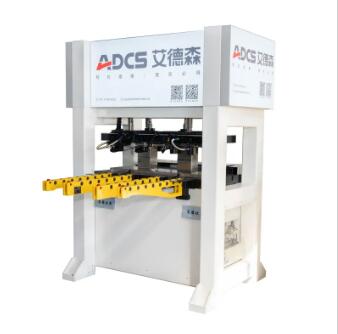How to Implement a Quick Die Change System in Your Manufacturing Process
2024-08-10
The advantages of a Quick Die Change (QDC) system are clear: reduced downtime, improved safety, and enhanced flexibility. But how do you go about implementing a QDC system in your manufacturing process? In this blog, we'll walk you through the key steps involved in adopting a Quick Die Change system and the factors to consider for a successful implementation.
Step 1: Assess Your Current Die Change Process
Before implementing a QDC system, it's crucial to assess your existing die change process. Identify the pain points, such as long changeover times, frequent manual interventions, and safety risks. Analyze the time and resources currently required for die changes, and consider how these factors impact your overall production efficiency.
Step 2: Define Your Goals and Requirements
Based on your assessment, define the specific goals you want to achieve with the QDC system. These goals might include reducing die change times by a certain percentage, improving safety standards, or increasing production throughput. Additionally, outline the technical requirements, such as the types of dies used, the size and weight of the dies, and the level of automation desired.
Step 3: Choose the Right QDC Components
Selecting the right components is critical to the success of your QDC system. Some of the key components to consider include:
- Die Lifters: Choose the appropriate type of die lifters based on your die sizes and weights. Pneumatic or hydraulic lifters are ideal for heavy dies, while mechanical lifters may be suitable for lighter dies.
- Clamping Systems: Opt for automatic clamping systems that ensure secure and consistent clamping of the die. Magnetic, hydraulic, or pneumatic clamps can be used, depending on your specific needs.
- Die Carts: Depending on the layout of your facility, select manual or automated die carts to transport dies efficiently. Automated carts may offer greater speed and precision in moving dies.
- Control Systems: Invest in a control system that integrates seamlessly with your existing equipment and provides user-friendly operation. Advanced control systems with touchscreens and programmable settings can enhance the efficiency of the QDC process.
Step 4: Plan for Integration and Training
Integrating a QDC system into your existing manufacturing process requires careful planning. Work closely with your QDC system provider to ensure that the new components are compatible with your current equipment and workflow. Develop a detailed plan for the installation, testing, and commissioning of the system.
Training is another critical aspect of a successful implementation. Ensure that your operators, maintenance staff, and supervisors are fully trained on how to use the QDC system effectively. Proper training will minimize the learning curve and help your team get the most out of the new system.
Step 5: Monitor and Optimize the System
Once the QDC system is up and running, it's important to monitor its performance regularly. Track key metrics such as die change times, machine uptime, and safety incidents to evaluate the system's impact on your production process. Use this data to identify areas for further optimization, such as fine-tuning the clamping force or adjusting the lifter speed.
Consider conducting regular maintenance checks to ensure that the QDC components remain in optimal condition. Preventive maintenance can help avoid unexpected downtime and extend the lifespan of the system.
Benefits of a Well-Implemented Quick Die Change System
When properly implemented, a QDC system can bring numerous benefits to your manufacturing operation, including:
- Significant Time Savings: Dramatically reduced die change times mean that your production lines can switch between different products or components more quickly, increasing overall throughput.
- Enhanced Safety: Automated clamping and lifting reduce the need for manual handling of heavy dies, lowering the risk of workplace injuries and improving operator safety.
- Greater Flexibility: A well-implemented QDC system allows for faster and more frequent die changes, enabling your operation to respond more quickly to changing customer demands or product specifications.
- Cost Efficiency: Although the initial investment in a QDC system may be substantial, the long-term savings in reduced labor costs, increased production efficiency, and fewer safety incidents can result in a positive return on investment.
Conclusion
Implementing a Quick Die Change system in your manufacturing process is a strategic move that can lead to significant improvements in efficiency, safety, and flexibility. By carefully assessing your current process, selecting the right components, and providing proper training, you can ensure a smooth transition to a QDC system. The result is a more agile and productive manufacturing operation, better equipped to meet the demands of today's competitive market.


